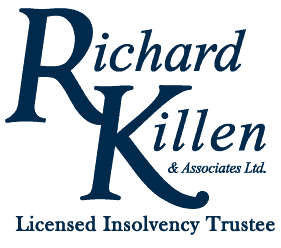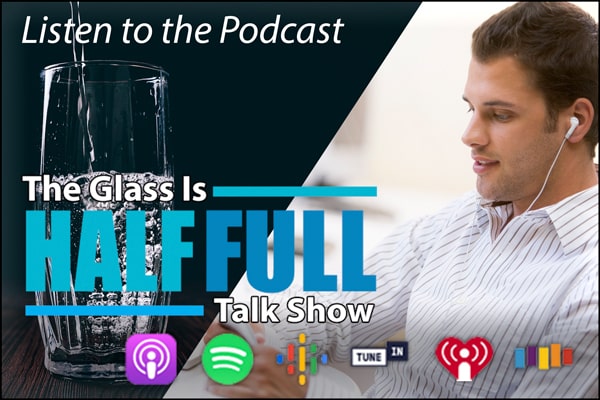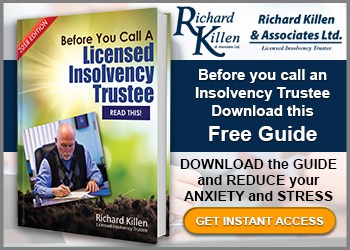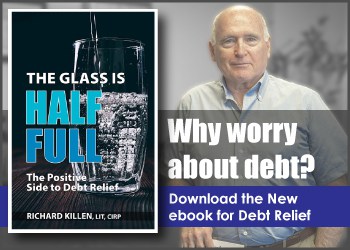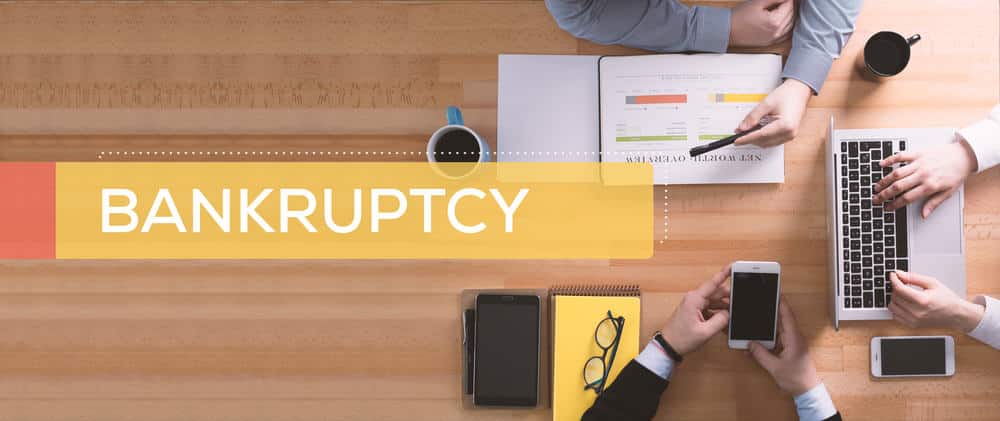
Table of Contents
~ Bankruptcy Means Relief from Debt
~ Toronto Personal Bankruptcy – Questions and Answers
- Are you eligible for bankruptcy?
- What assets can you keep, and what will you lose if you go bankrupt in Canada?
- Will all your debts be included in a bankruptcy filing?
- How long does bankruptcy last in Toronto?
- Can you file for bankruptcy yourself?
~ Want more Information about filing for Bankruptcy or exploring your options
If your situation is such that you are facing unmanageable debt, meaning that your income may be barely enough to cover your basic cost of living and there is no money left to pay down or even keep your debt payments up to date, then filing for bankruptcy in Toronto or the GTA could provide you with a fresh start.
A “fresh start” is often used by insolvency people. It means re-setting the financial odometer: a fresh financial start. Clearing all unsecured debts within 9-21 months allows you to eliminate your debt and restart your financial life free of the stress and burden caused by debt.
Bankruptcy Means Relief from Debt
Many hard-working, honest people never imagined that they would find themselves in such a financial crisis. They have always done their best to meet obligations and all of a sudden, often for reasons beyond their control, they find themselves unable to pay their debts and lack the assets to cover their outstanding debts.
The Bankruptcy and Insolvency Act (BIA), also sometimes still referred to as the “Bankruptcy Act, or the BIA,” was created by the federal government in large part for the specific purpose of helping unfortunate, honest Canadians solve their financial troubles. The relief that is provided in bankruptcy (or a proposal, or a consumer proposal) comes from something called a Stay of Proceedings which goes into effect as soon as the process is filed, in other words immediately.
The Stay of Proceedings (or Stay) is a very powerful factor:
- It is automatic – you don’t have to ask for it, every person gets it as soon as they file for bankruptcy.
- It is immediate – protection from your unsecured creditors as soon as you file.
- It eliminates the threat of any legal action taken by your unsecured creditors.
- It stops the enforcement of any Court Order with regard to your unsecured debts.
- It stops your wages from being garnished.
- It releases your frozen bank accounts.
- It stops harassing phone calls from creditors.
- It stops any other aggressive debt-collection tactics.
- It stops any further interest charges by your creditors.
- It protects some of your assets, depending on exemption laws on our province.
Though the main purpose of the bankruptcy process for you is to help you solve your financial troubles the system does not take everything you own and put you out on the street. Some people do have to give up certain assets, but most people don’t lose anything.
It will give you:
- The legal protection you need while you regain financial stability, and
- The opportunity to eliminate unsecured debt and emerge with a clean slate, and
- Some private debt and credit counseling to assist you to regain and keep control over your future financial life.
Many bankrupt people call it being given a new lease on life, a fresh start with financial freedom. It is in a sense because you’re legally given a chance to settle your liabilities and end the cycle of debt in your life. As soon as you are discharged from bankruptcy, you should begin your life debt-free. You can have a clear field to start afresh and no longer be hindered by the oppressive pressure and discouragement of indebtedness.
However, it’s not possible for everyone to be given this new lease on life. While the bankruptcy program is available to all Canadians, it can only be availed of by those who meet the necessary conditions or requirements. Is it an option that is available and right for you? Is it an opportunity that you could take?
The only way to find out for sure is to speak to a Licensed Insolvency Trustee (for brevity referred to in these pages as a “LIT” or “trustee”). Only a LIT can put everything in perspective for you and allow you to determine if filing for personal bankruptcy will be what you need.
Bankruptcies in Toronto are a complex process and eligibility for the program will depend on each individual’s situation. It might not be the first solution you think of when you realize that you can no longer keep up with your bills and debts, but it might be the right debt solution for you. But it is not a decision to be made lightly. That’s why you need to see a trustee.
At Richard Killen & Associates, we encourage you to get professional advice. Our team of highly skilled insolvency experts will make sure that you know all your options and can find the best possible solution to your financial problems. We’ll ensure that you understand how everything works and how it will affect you and your family in the long run.
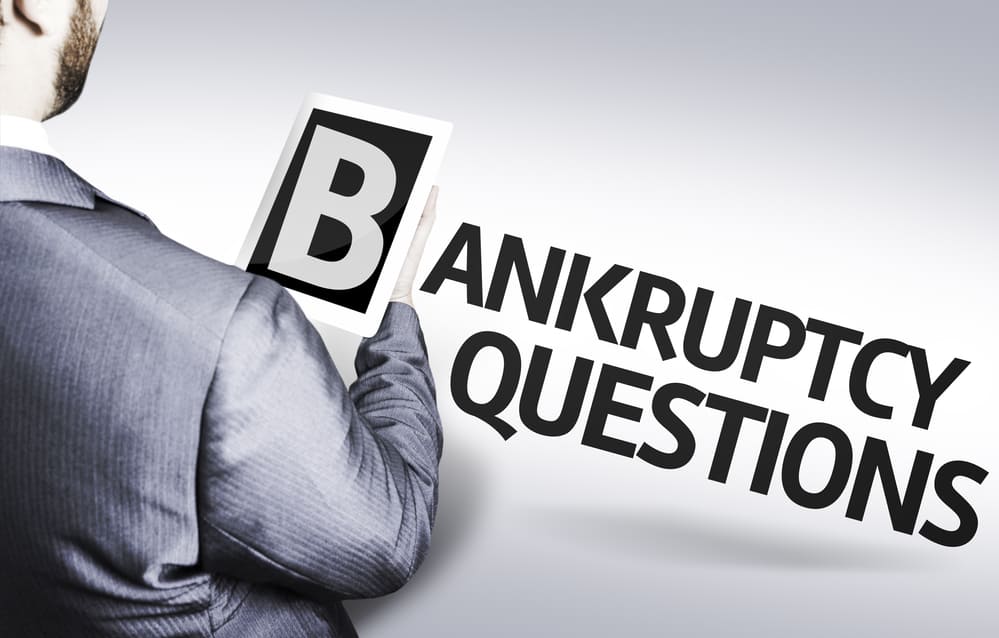
Toronto Personal Bankruptcy – Questions and Answers
Bankruptcy is filled with misconceptions. There are mistaken beliefs about losing assets, about paying huge fees, and the unpleasant thoughts of the stigma still surrounding it today. It doesn’t help that the many people who are or were bankrupt tend not to speak too openly about it.
Talking to a Licensed Insolvency Trustee will help open your eyes to the facts. Here are some examples:
Are you eligible for bankruptcy?
You can file a bankruptcy or a proposal under the BIA if you are an Insolvent Person, which means:
- You are a resident of, or carry on business or have property located in Canada;
- You owe at least $1,000 in unsecured debt;
- Your assets, if sold for fair market value, would not be sufficient to pay off your debts.
What assets can you keep, and what will you lose if you go bankrupt in Canada?
Contrary to prevalent belief, like most people you won’t lose everything when you file for bankruptcy. The bankruptcy system in Canada is set up in such a way that you will be able to maintain a reasonable standard of living while you go through the process. At the same time, it tries to ensure that creditors are treated equally and fairly.
To determine what assets you might lose if they go bankrupt each province and territory has set up a list of property exemptions. These exemptions specify which assets you are allowed to retain. This is one of the most important parts of what the trustee explains to you.
If you file a bankruptcy In Ontario
these are the assets you may keep:
- Your home if the net equity does not exceed $10,000;
- One car valued at less than $6,600;
- Unlimited clothing and other personal effects;
- Household furnishings and appliances valued at less than $13,150;
- Tools of the trade (equipment that you use to earn a living) worth up to $11,300;
- Certain life insurance policy values; and
- All RRSP, RRIF and SPSP (Deferred Profit Sharing Plan) savings – excluding contributions made in the recent 12 months before your bankruptcy.
Assets you may lose include:
- Cash on hand other than that necessary to your daily subsistence;
- The accumulation in savings accounts or savings plans;
- The net equity in your home if it is greater than $10,000;
- A vehicle’s equity value which exceeds the $6,600 exemption limit;
- Investments (like Canada Savings Bonds) which are considered straight savings;
- Tax refunds due at the date of bankruptcy;
- Any RRSP contributions that you’ve made in the 12 months before filing for bankruptcy.
Will all your debts be included in a bankruptcy filing?
Bankruptcy will cover most of your unsecured debts, as long as they weren’t incurred fraudulently, including:
- Credit card debt, including retail store cards
- Medical bills
- Unsecured lines of credit
- Payday loans
- Personal loans not secured by any asset
- Bills, such as for utility, cable and phone bills, insurance, or membership payments
- Income tax, HST, and other unpaid taxes
- Deficiency amounts owing after the repossession of any of your property.
These debts are normally excluded from a bankruptcy discharge and will still have to be paid:
- Secured debts, like a car loan or mortgage if you decide to retain the property itself
- Student loans where your class graduated less than 7 years ago.
- Arrears of child support and alimony payments
- Debts incurred via the various definitions of fraud.
How long does bankruptcy last in Toronto?
The most important word in bankruptcy is “Discharged”. When you file for bankruptcy you sign something called an Assignment, which voluntarily assigns all your non-exempt property to the trustee for the general benefit of your creditors. The Assignment acts as an application for a Discharge from your debts (and from the Bankruptcy itself). When you receive your Discharge you are released from your debts (with the few exceptions mentioned above).
Most people get their Discharge automatically after a minimum period of nine months. But, like everything else in life, they have to earn it. There are 5 things everyone who goes bankrupt has to do to earn their discharge:
- Make sure they neither refuse nor neglect to attend the counseling the trustee must provide;
- Provide the trustee with a monthly account of their family’s income and expenses;
- Supply the trustee with the information needed to file your income tax return(s) for the appropriate years;
- Comply with any and all undertakings to which they may have agreed; and
- Generally, cooperate with the trustee as required.
These are the 5 things every person who goes bankrupt will have to ensure is done so they may qualify for their discharge, which will be automatic if they have never been bankrupt before, or they have been bankrupt only once before. Beyond that, the discharge will have to be granted by the court, so the length of the bankruptcy will not be predictable.
Other conditions can factor into the length of the bankruptcy. For instance:
- Your income – If your income is higher than the prescribed amount set yearly by the OSB (the government), you will be required to pay what are called surplus income payments. The amount is calculated by a set formula and though it is meant only as an equitable balance between your rights and that of your creditors, it will extend your bankruptcy by 12 months.
- The number of prior bankruptcies you’ve had – If you’ve had two or more previous bankruptcies, you will not be eligible for an automatic discharge from your new bankruptcy. The length of your bankruptcy will be determined by a Judge or Registrar of the bankruptcy court at a hearing.
- An objection a creditor, the trustee, or the Superintendent of Bankruptcy may lodge against your discharge. It is the right of any creditor to oppose your discharge. It doesn’t happen very often: only 1.4% of all bankruptcies. The trustee and the Superintendent will oppose your discharge on technical grounds such as your failure to perform all the duties mentioned earlier.
- Though bankruptcy is a legal process that settles the issue of your unpayable debts, it is also intended to be rehabilitative for you. Principally you will need to complete two counseling sessions designed to help you learn (or re-learn) money and credit management.
Can you file for bankruptcy yourself?
When you decide to file for personal bankruptcy in Toronto, you will need to work with a Licensed Bankruptcy Trustee (LIT) who is licensed by the Office of the Superintendent of Bankruptcy (OSB). The law requires that you have a face-to-face Assessment meeting with a LIT to be able to file a bankruptcy or proposal. The LIT also has the mechanism to file the papers electronically, which is the way it’s done nowadays.
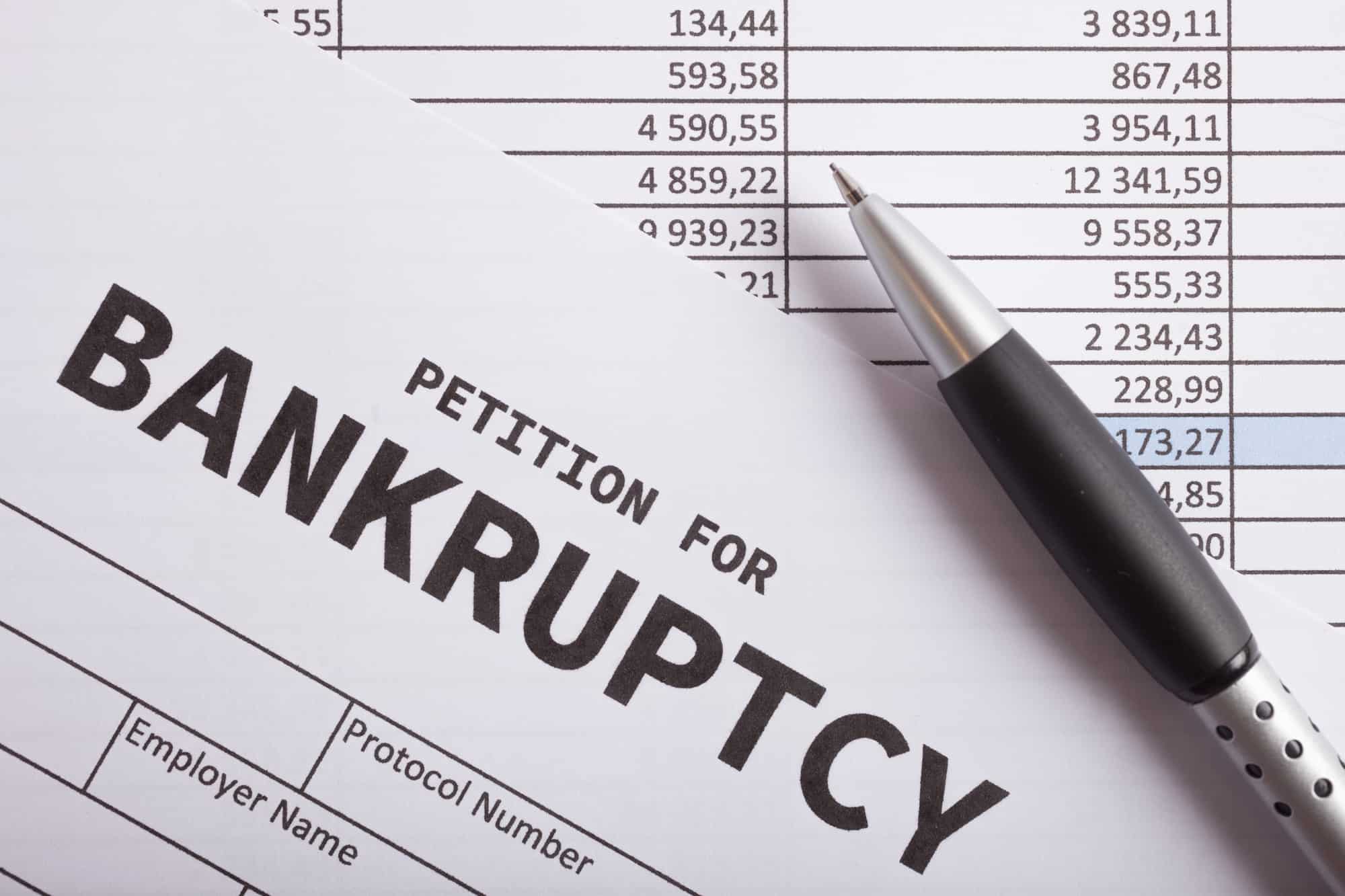
Want more Information about filing for Bankruptcy or exploring your options
Filing for Bankruptcy, or a proposal is usually an extremely difficult decision to make. It should not be considered a quick fix when you get in over your head. There are several factors involved. You might not even need to declare bankruptcy. Then again, it could be your best option.
Unlike other debt counseling services or consolidation loan companies, a Licensed Insolvency Trustee is the only person who can provide all the options to deal with your debt problems and explain their legal consequences so you can avoid making any mistakes.
If you’re in a situation where your debts are unmanageable and you have no idea how to deal with it, we encourage you to call Richard Killen & Associates at one of our offices across the Greater Toronto Area. We’ll provide you with a FREE initial consultation where you can talk to a Licensed Insolvency Trustee to learn more about bankruptcy and the other alternatives. You should be able to find the right path to debt-free land.
Make that call now. It really could be the most stress-relieving call you will ever make! Remember, debt relief = stress relief!
